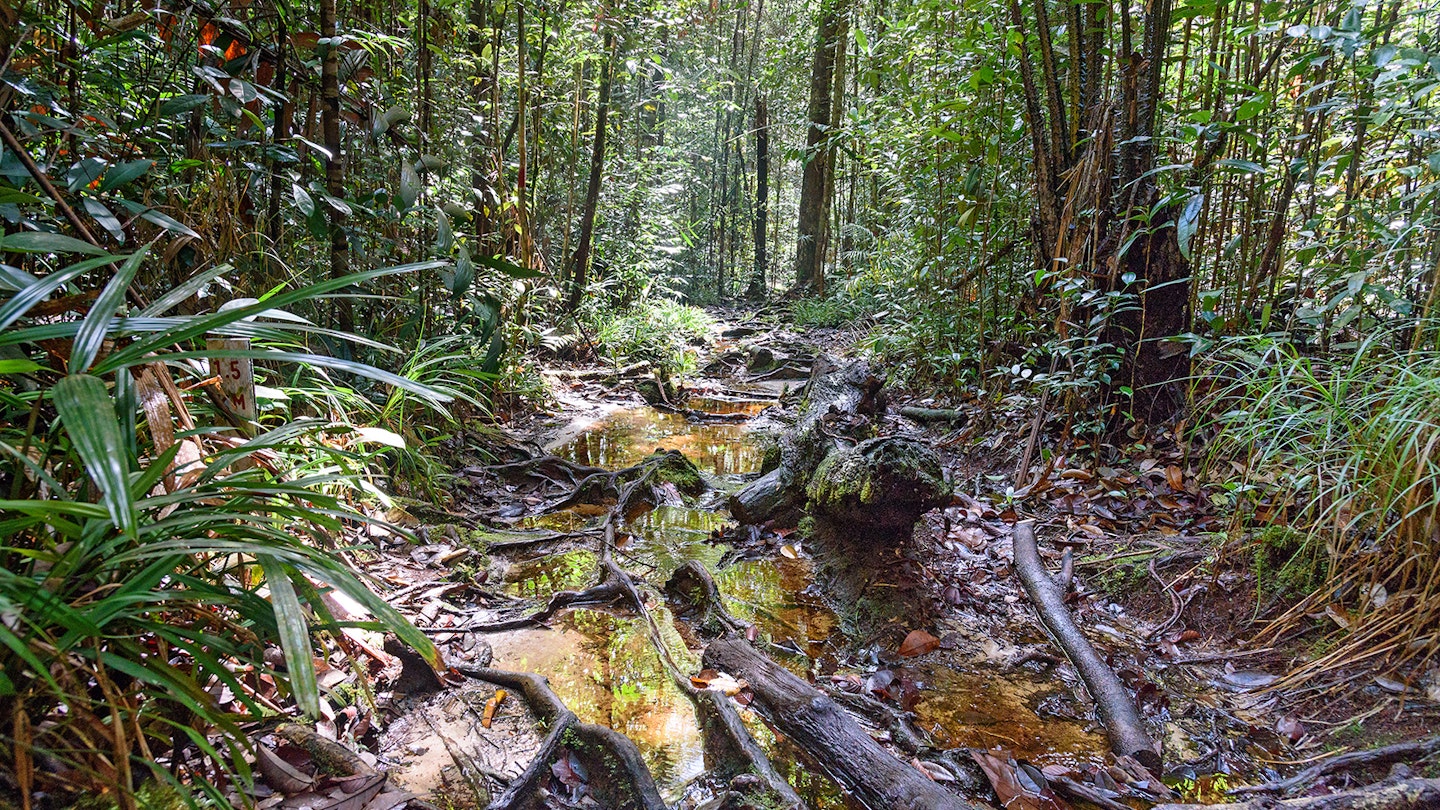Share
Apr 26, 2017 • 5 min read

The all-enveloping equatorial rainforests of Borneo’s fine national parks are superb for day hikes, but nothing compares to an overnight trek for experiencing these incredible jungles. A world teeming with orangutans, carnivorous pitcher plants, and gargantuan Rafflesia flowers deserves extensive exploration. Given the diversity of the land and the varying conditions throughout your trek, possessing the right gear is crucial—unique needs can significantly influence whether your adventure is thrilling or a soggy ordeal.

Dressing for the Climate
Borneo, comprising the Malaysian states of Sarawak and Sabah, the sultanate of Brunei, and Indonesian Kalimantan, experiences both wet and dry seasons. Rain can occur unexpectedly throughout the year, often torrential in nature. Consequently, even during non-rainy periods, nearly 100% humidity means you will be drenched in sweat.
The best way to remain comfortable is by using clothing made from materials that do not absorb water. Avoid cotton, and instead opt for synthetics like nylon, polyester, and Lycra. Gear, from socks to photography equipment, should be stored in waterproof bags.
It’s advisable to bring two sets of clothing: one for hiking and another for evening use. Your daytime hiking clothes will become soaked almost immediately and will remain wet until you return to civilization. Keeping these separate is essential; otherwise, you risk having two sets of damp clothing. Additionally, talcum powder can mitigate chafing from wet undergarments.

Coping with Creepy-Crawlies
While mosquitoes are not a significant issue in most parts of Borneo, thanks in part to millions of insect-eating bats, you may find yourself contending with two common leech varieties. The first is the ground-dwelling brown leech, notorious for its painless bites; you’ll notice its presence only after seeing blood on your socks. The second type is the tiger leech, which drops from overhead branches and delivers a bite that is quite painful.
Various methods exist for keeping these pesky bloodsuckers at bay, but one widely used strategy involves wearing knee-length ‘leech socks,’ made of durable, tightly knit material. You can purchase leech socks locally in Borneo for a better price than through online retailers. Some travelers also use Spandex or pantyhose to create a barrier. If a leech attaches itself, salt is an effective removal tool; simply touch it with a small fabric bag containing salt. Post-removal, a well-placed ‘parang’ can ensure you’re rid of it permanently—my Borneo trekking guide emphasizes this point quite strongly.

Sleeping Safely and Dryly
To isolate yourself from insects and small mammals while sleeping, suspend a lightweight hammock between two trees. Two reliable hammock companies to consider are Hennessy Hammocks (hennessyhammock.com) and DD Hammocks (ddhammocks.com). Wrap your hammock in a mosquito net treated with permethrin for optimal protection against flying insects, and place a wide basha (tarpaulin) over your hammock to stay dry. Lastly, use a lightweight sleeping bag with a comfortable liner to enhance your sleeping environment.
This rain-protected space beneath your basha also serves as a convenient area to dry your trekking footwear, socks, and clothes during the night.
Rainforest First Aid
Even minor scratches can lead to infections in the tropical climate; therefore, bringing proper first aid supplies is vital. Use antiseptics such as povidone-iodine for cuts and scrapes, and to minimize itching from insect stings, utilize calamine lotion, sting relief spray, or aloe vera. It’s also crucial to purify local water using filters or tablets.
For foot care, it’s essential to dry your feet thoroughly after removing your wet boots and socks, applying antifungal cream or powder. Consult your doctor about carrying a supply of broad-spectrum antibiotics and the conditions under which to use them.

List of Essentials for Your Borneo Trek
For a healthy, safe, and enjoyable experience in the Bornean rainforest, here’s a checklist of essential gear:
- Basha – waterproof tarpaulin to protect your hammock from rain.
- GPS tracker – navigate through the trees efficiently.
- Hammock – keep yourself and your sleeping bag elevated from the ground.
- Hat – a wide brim will shield your face from rain.
- Hiking shoes – select footwear suitable for either well-trodden paths or rugged terrains.
- Leech socks – serves as protection against blood-sucking leeches.
- Medications – pack anti-fungal creams, powders, and itch relief products.
- Mosquito net – keep bugs away during sleep, especially effective when treated with permethrin.
- Parang – essential tool for cutting and other tasks.
- Rain poncho – additional layer against downpours.
- Water purification agent or filter – ensures safe drinking water.
- Waterproof bags – keep your essential items dry and organized.





